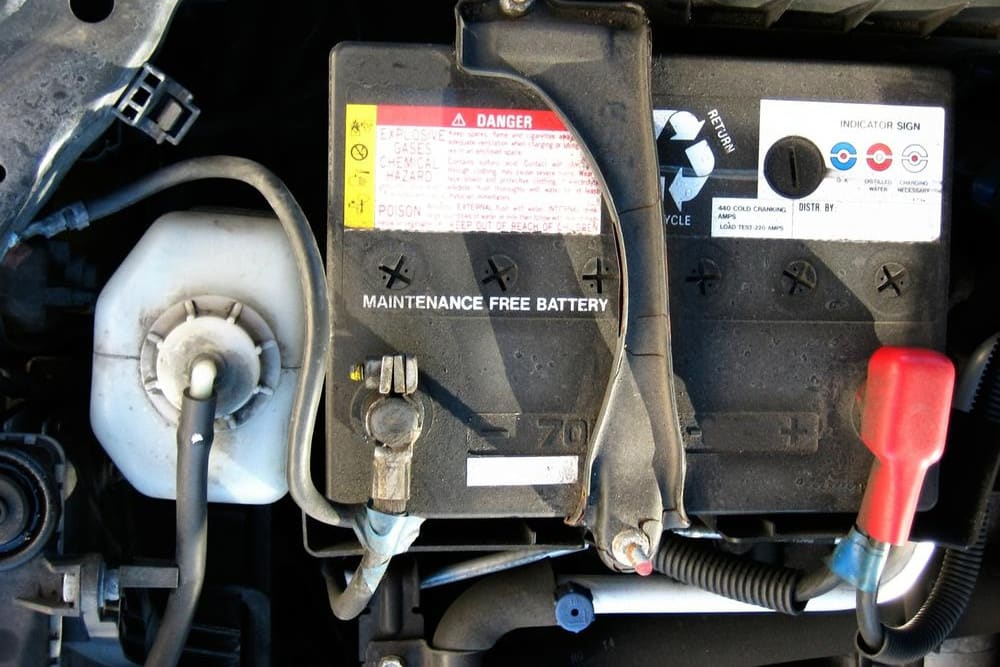

One of the most misunderstood parts of today's modern engine is the overflow tank or surge tank. The surge tank under the hood of most cars and trucks is designed to be an overflow of extra coolant flowing from the engine or the radiator. As the engine increases in operating temperature, coolant will expand in volume, taking up more space inside the radiator, coolant system hoses, and motor. Since we fill our radiators when the engine is cold, the overflow of fluid is collected inside the surge tank. The surge tank hose carries the overflow from the radiator to the storage device.
Like any rubber or plastic part, the surge tank hose is subject to common wear and tear issues that can result in the surge tank hose developing cracks, holes or other damage that will reduce its effectiveness in effectively moving hot coolant to the surge tank. In some cases the hose will burst, causing a significant loss of coolant and potentially leading to overheating and engine; which can cause head gasket failure and expensive repairs needed to be completed.
Here are some of the more common symptoms associated with a worn out or failing surge tank hose that will alert you that service or surge tank hose replacement is due.
1. Leaking radiator coolant under the right side of the car
Most surge tanks are located in the right upper corner of the engine compartment. The surge tank hose runs from the top right hand corner of the radiator to the surge tank, and can come in contact with the fuel injector or other engine parts as it tends not to be attached to anything. Because of this fact, the surge tank hose can come into contact with warm or even hot engine parts. If this happens too often, a hole can develop causing hot radiator fluid to leak. When it hits the ground, it will typically be on the right hand side of the car. If you notice radiator fluid near your right front tire, contact a local ASE certified mechanic as soon as possible, so they can inspect the surge tank and surge tank hose and replace the surge tank hose if needed.
2. Swelling in hose
A common cause of worn out surge tank hoses is extensive heat caused by hot radiator water / coolant frequently running through to the overflow tank. Like the coolant, the material that most surge tank hoses are manufactured out of is designed to expand and contract based on temperature. However, if oil gets inside or on the outside of the hose, it's prone to swelling as well. If you're changing your oil or filling your radiator with coolant frequently and notice that the surge tank hose is swollen, it should be replaced immediately before it ruptures and causes extensive engine damage.
3. Engine frequently overheats
If you notice that the temperature warning light on your dashboard frequently lights up, or if you have a temperature gauge that shows your temperature is in the "red", this means there is trouble in the coolant system. Common overheating problems are caused by restrictions in coolant flow, broken water pump, or a surge tank or surge tank hose that is broken and causing more coolant to escape. An engine running hot on a normal basis is anything but normal, and should be inspected and repaired by a certified mechanic as soon as possible.
4. Surge tank hose is damaged, broken, cracked
We can file this one under the most obvious symptoms; but in all seriousness, if you or a mechanic are working under the hood for any reason, a quick visual inspection of the surge tank hose will take less than a minute to complete and may save you thousands of dollars in repairs. If you catch a minor leak before it becomes a major problem, it will reduce the potential of head gaskets breaking or other internal engine part failures from occurring.
Being proactive about routine service and maintenance can reduce the potential of problems with the coolant system, as most ASE certified mechanics typically include the surge tank hose in their routine inspection items. Take time to ask your mechanic to inspect the coolant hoses in your car during every oil change or radiator service; you may save yourself a lot of hassle and money.



